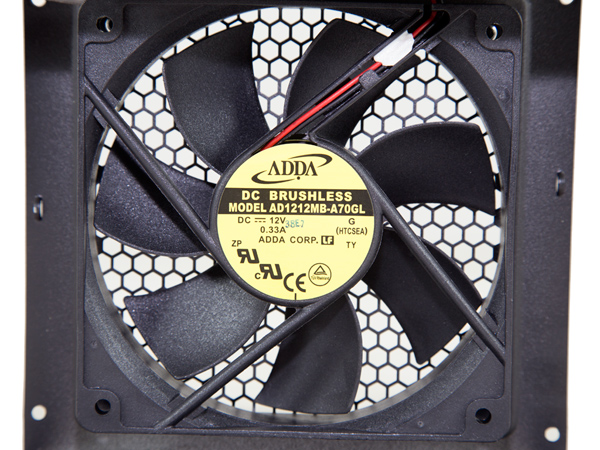Seasonic G-Series 450W PSU Review
Seasonic's G series consists of reliable, high-performance PSUs. Today, we're reviewing the G-450 with 450W capacity, which features a semi-modular cabling design.
Why you can trust Tom's Hardware
A Look Inside And Component Analysis
Parts Description
Our main tools for disassembling PSUs are a Thermaltronics soldering and rework station, and a Hakko 808 desoldering gun.
| Primary Side | |
|---|---|
| Transient Filter | 6x Y caps, 2x X caps, 2x CM chokes, 1x MOV |
| Inrush Protection | NTC thermistor |
| Bridge Rectifier(s) | 1x GBU10V08 (800V, 10A @ 85 °C) |
| APFC MOSFETs | 2x Infineon IPP50R399CP (560V, 6A @ 100 °C, 0.399 ohm) |
| APFC Boost Diode | 1x STMicroelectronics STTH8S06D (600V, 8A @ 175 °C) |
| Hold-up Cap(s) | 1x Nippon Chemi-Con (420V, 270uF, 2000h @ 105 °C, KMR) |
| Main Switchers | 2x Infineon IPP50R399CP (560V, 6A @ 100 °C, 0.399 ohm) |
| APFC Controller | Infineon ICE3PCS01 |
| Switching Controller | Infineon ICE2HS01G |
| Topology | Primary side: Half Bridge & LLC Resonant Converter Secondary side: Synchronous Rectification & DC-DC converters |
| Secondary Side | |
| +12V MOSFETs | 2x NXP PSMN2R6-40YS MOSFETs (40V, 100A @ 100 °C, 3.7 ohm) 2x SBR10U45S SBRs (45V, 10A @ 110 °C, 0.54V forward voltage drop @ 125 °C) |
| 5V & 3.3V | DC-DC Converters |
| Filtering Capacitors | Electrolytics: Nippon Chemi-Con (KY, KZE, 5000h @ 105 °C), Rubycon (ZLH, 105 °C) Polymers: Enesol |
| Supervisor IC | SITI PS223 (OVP, UVP, OCP, SCP, OTP ) |
| Fan Model | ADDA AD1212MB-A70GL (120mm, 12 V, 0.33 A, 80.5 CFM, 38 dB[A], 2050 RPM, double ball-bearing) |
| 5VSB Circuit | |
| Rectifier | 1x SBR10U45 |
| Standby PWM Controller | Infineon ICE2QR4765 |
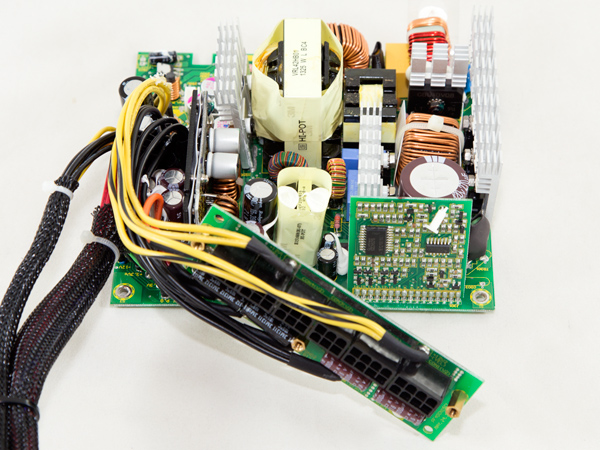
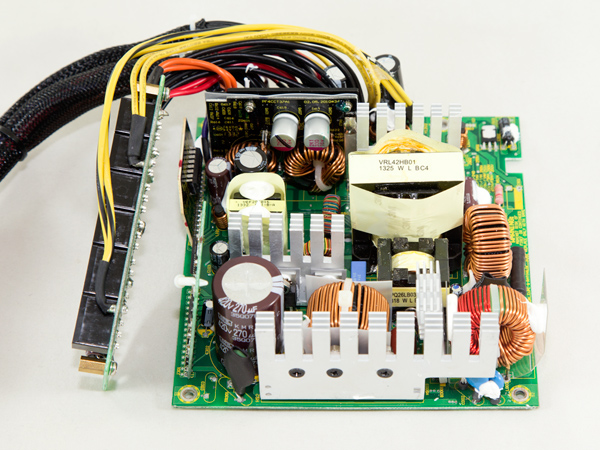
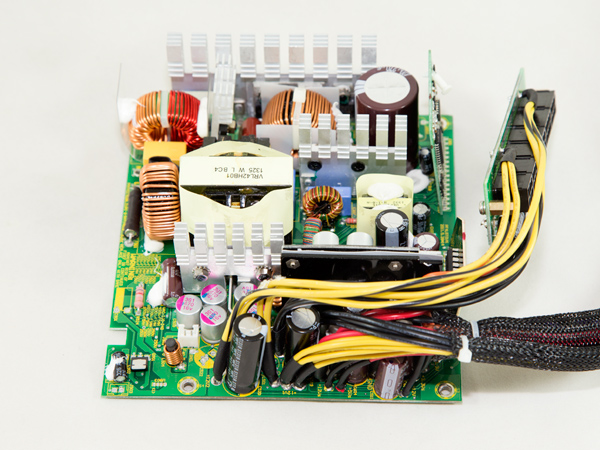
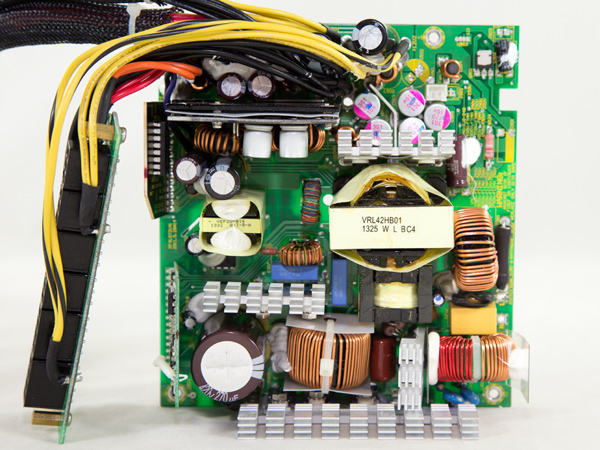
The platform used by all G-series PSUs is a budget-oriented one compared to Seasonic's KM3 and XP3 designs. At least it's modern and utilizes decent components. In the primary side of the G-450, an LLC resonant converter is used for increased efficiency; in the secondary side, DC-DC converters generate the minor rails. The unit's PCB is quite small and equipped with four heat sinks in total, the largest of which is located in the APFC converter. Seasonic could easily increase this platform's efficiency with some component changes. However, the main purpose of this unit was to decrease production costs rather than to offer the best-performing PSU in its category.
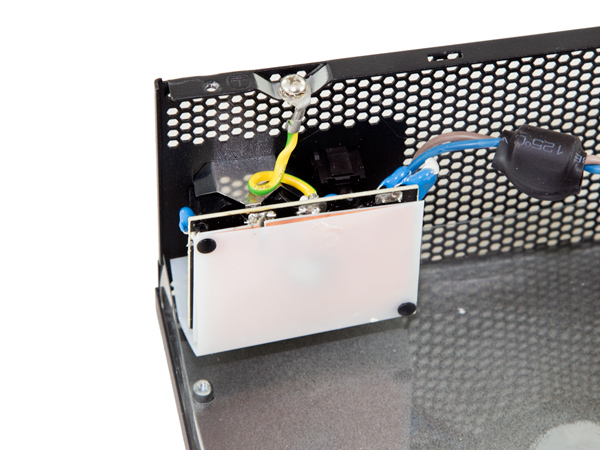
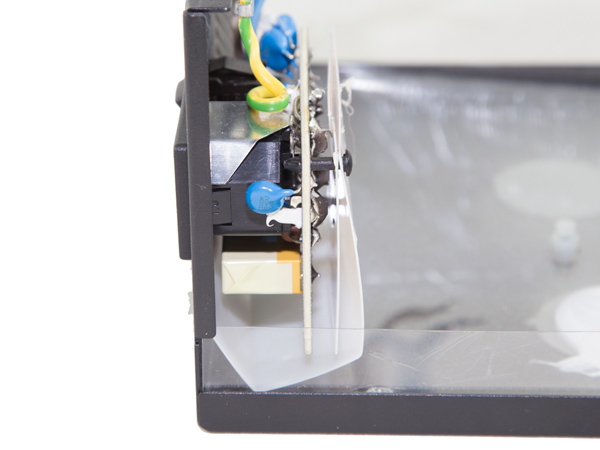
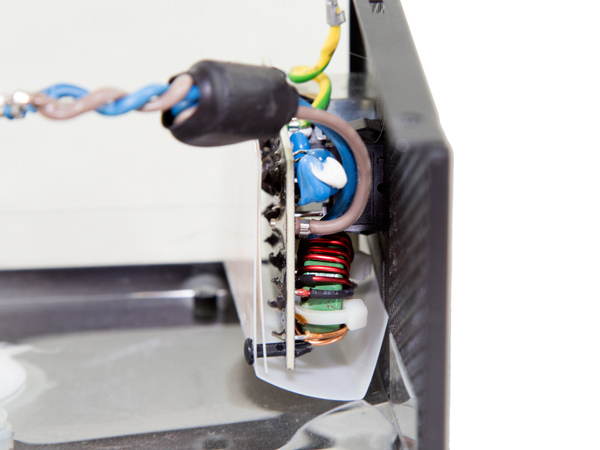
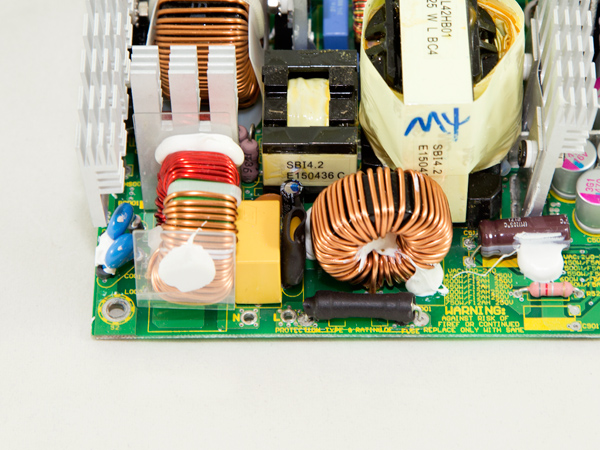
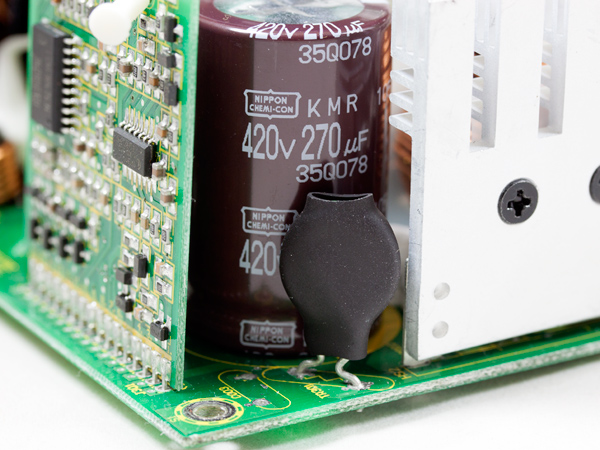
The first part of the transient/EMI filter is located on a small PCB right behind the AC receptacle, and includes two pairs of Y caps, a single X cap and one CM choke. The same filter continues on the main PCB, with two Y caps and one X cap and an additional CM choke. We also spotted an MOV, which is a small and inexpensive component that protects again spikes coming from the main grid. The inrush current protection is handled by an NTC thermistor that is located right next to the bulk cap.
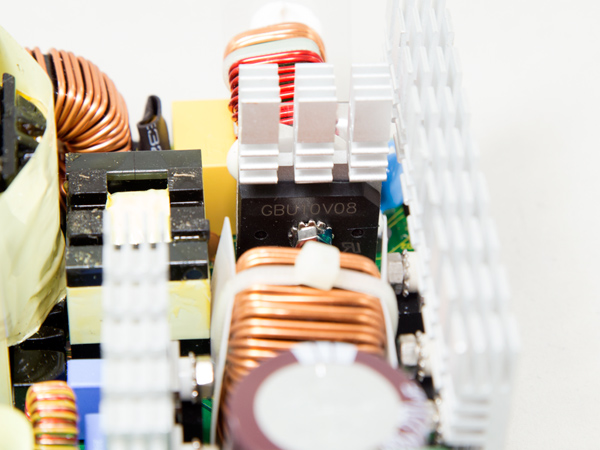
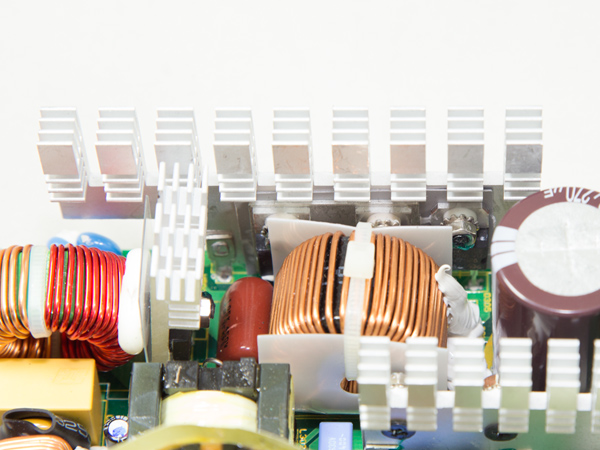
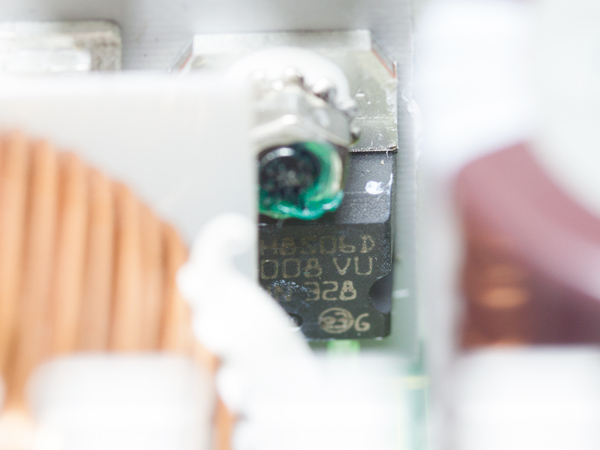
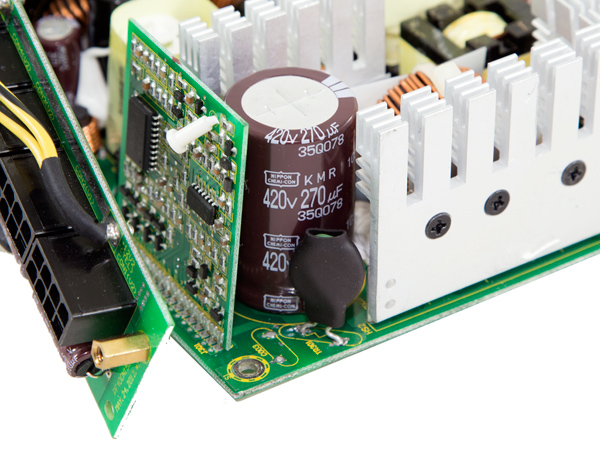
The single bridge rectifier is bolted onto a dedicated heat sink. Its model number is GBU10V08, and it can handle enough current to meet the demands of this PSU. In the APFC converter, two Infineon IPP50R399CP power transistors are used, along with a single STMicroelectronics STTH8S06D boost diode. The bulk cap is provided by Chemi-Con (420V, 270uF, 2000h at 105 °C/221 °F, KMR), and although its capacity looks low, it provides a pretty high hold-up time.
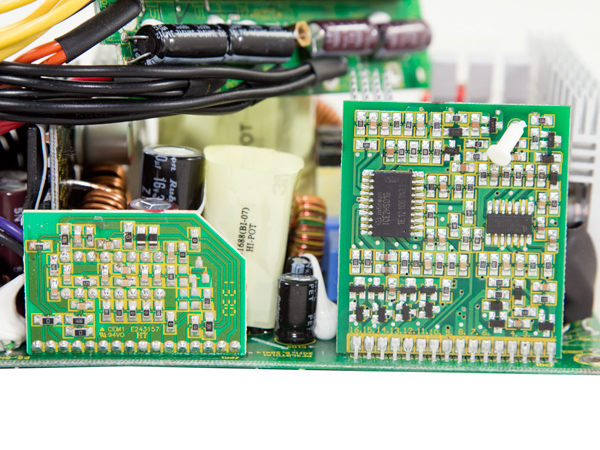
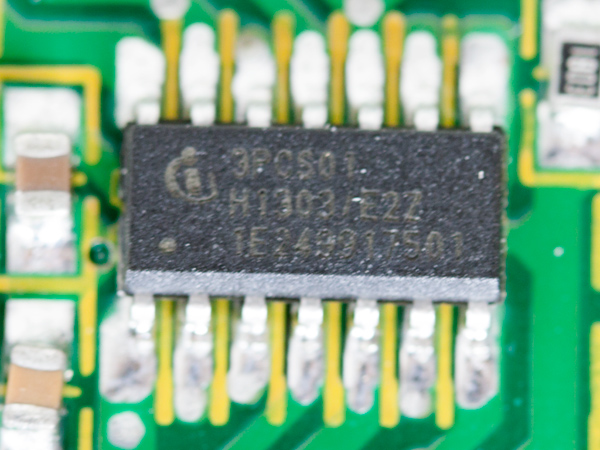
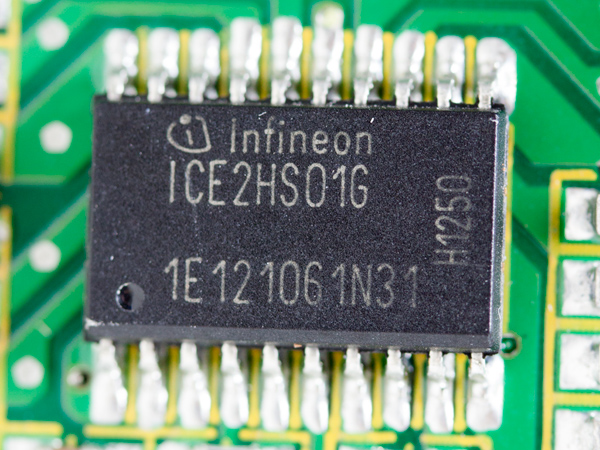
On the left of the PCB shown in the photos above, there are two Infineon ICs. One of them, the ICE3PCS01, controls the APFC converter, while the other one, an ICE2HS01G, controls the primary switchers and the +12V FETs.
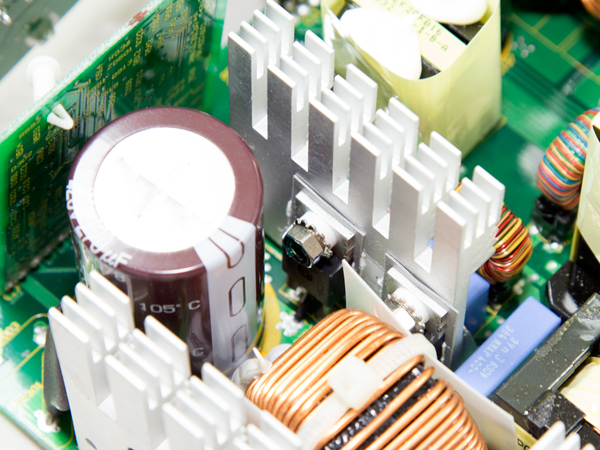
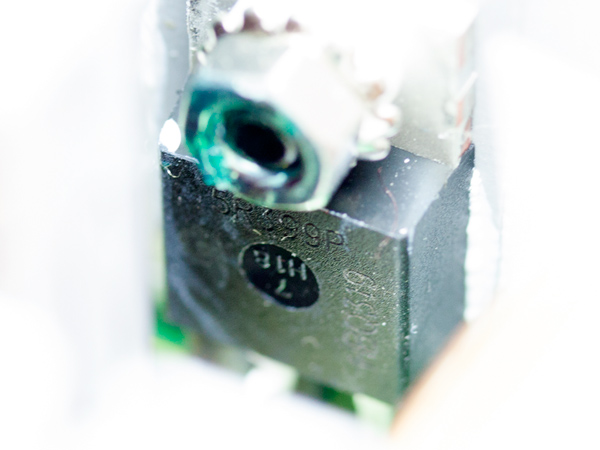
Two FETs are used as main switchers, and they are exactly the same as the FETs on the APFC converter. We noticed that Seasonic used FETs with high Rds (on) value in the primary side, which will have a notable effect on this unit's efficiency. The Rds (on) is the Drain - Source On Resistance of a FET; in other words, the total resistance between the drain and the source of a FET during the on state. It is one of the most crucial features of a FET because it provides a clear indication of how much energy can go wasted during switching. The lower the Rds (on) value of a FET, the less energy is wasted, especially under increased loads when lots of amperes pass through it.
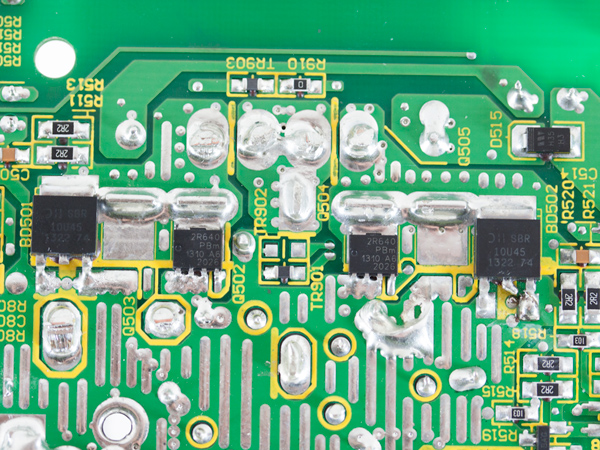
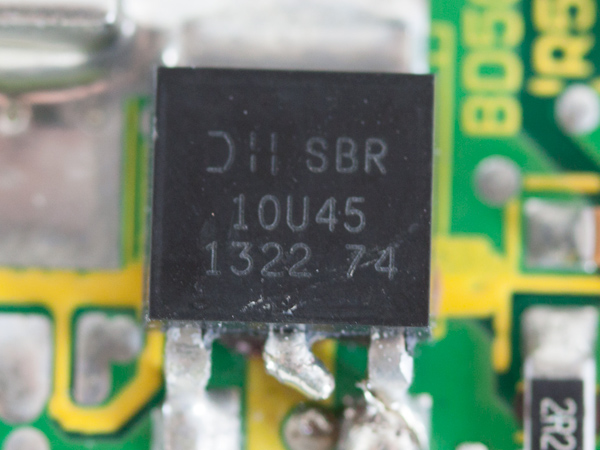
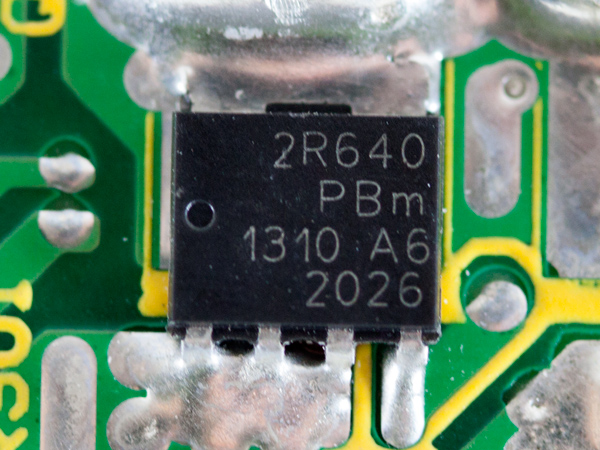
In the secondary side, the small heat sink is empty, and its role is to help in the cooling of the +12V FETs and SBRs that are installed under it on the solder side of the PCB. Two NXP PSMN2R6-40YS FETs, along with an equal number of SBR10U45S Schottky barrier diodes, regulate this rail. The SBRs actually replace the embedded diodes of the FETs, offering increased efficiency thanks to their lower voltage drops.
Get Tom's Hardware's best news and in-depth reviews, straight to your inbox.
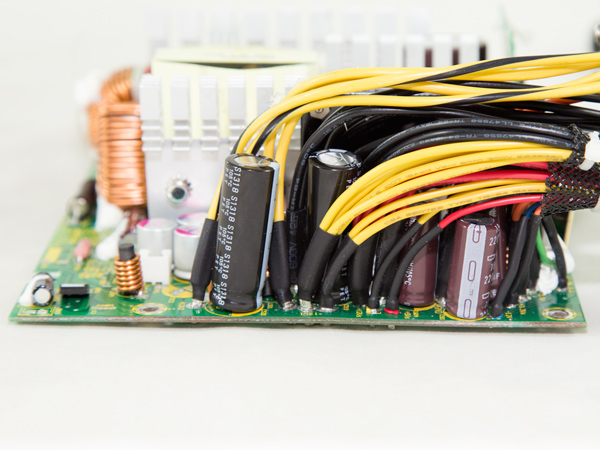
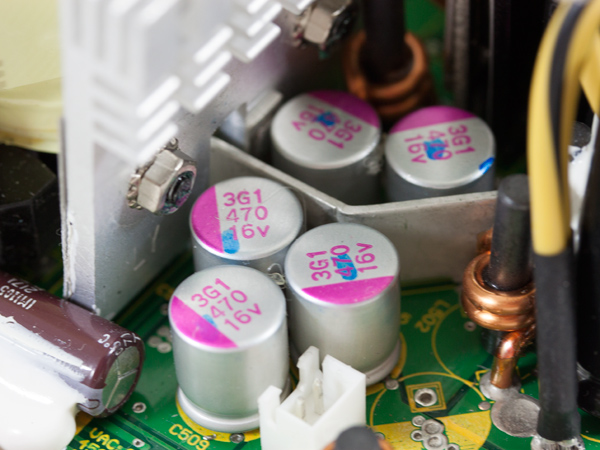
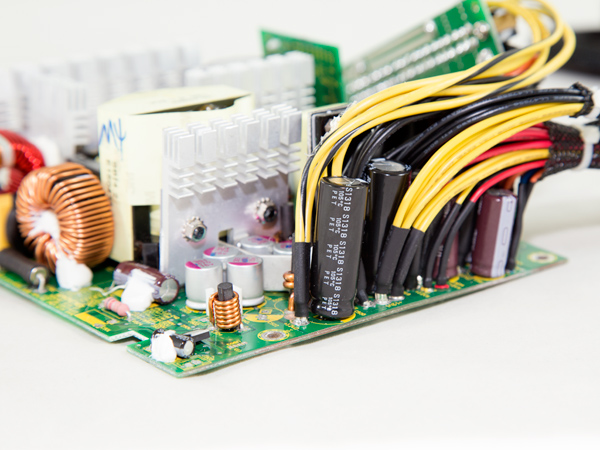
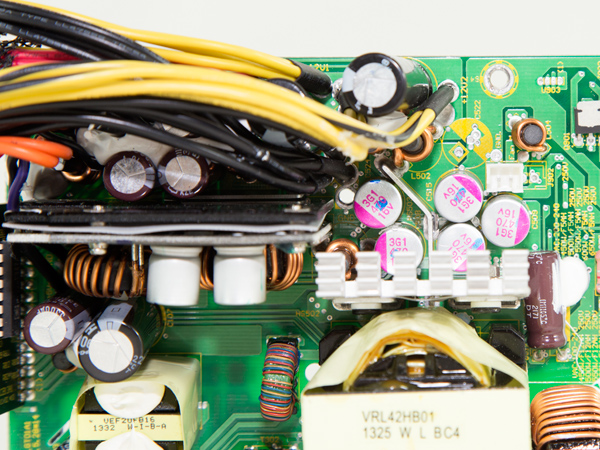
In the secondary side, several Enesol polymer caps filter the rails along with a top-notch mix of Rubycon and Nippon Chemi-Con caps, all rated at 105 °C (221 °F). When it comes to electrolytic caps, we couldn't ask for anything better, and this is why Seasonic is so confident about this platform's reliability, providing a long warranty period.
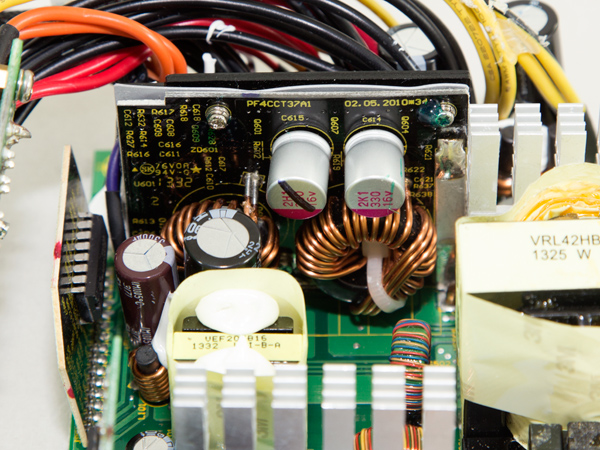
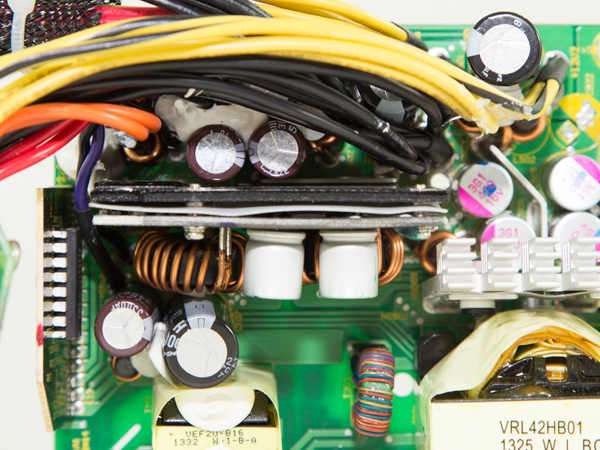
Both DC-DC converters are installed on a vertical daughterboard. Unfortunately, without some serious desoldering, we cannot identify the components on this board, and we didn't want to risk destroying a fine PSU.
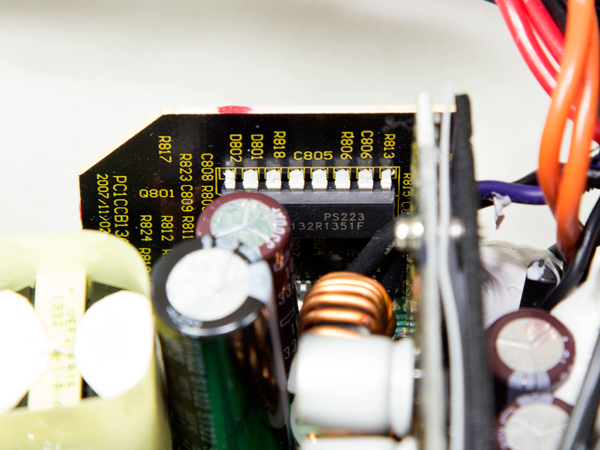
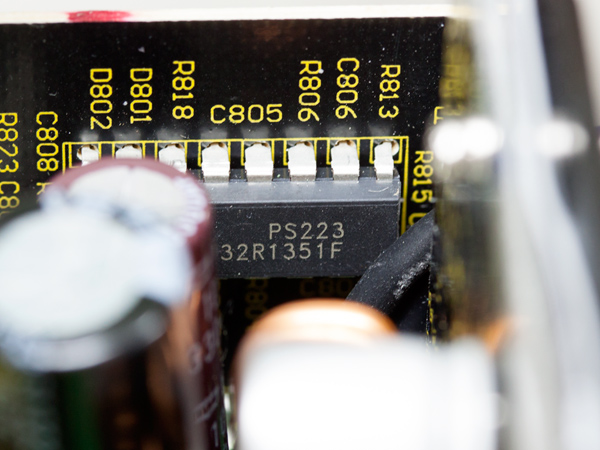
The supervisor IC is a SITI PS223, and it is installed on a small daughterboard. This is one of the few protection ICs supporting over-temperature protection (OTP) out of the box.
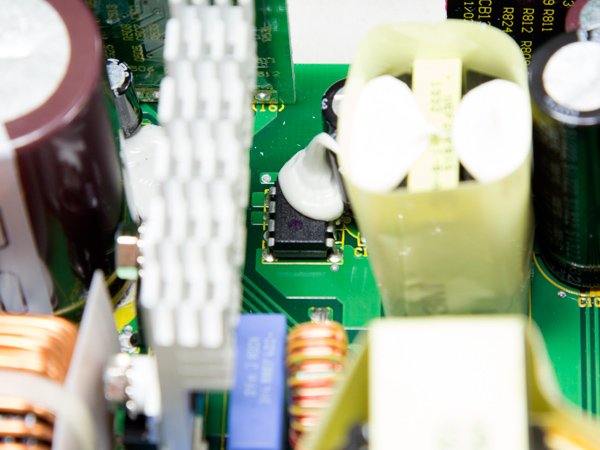
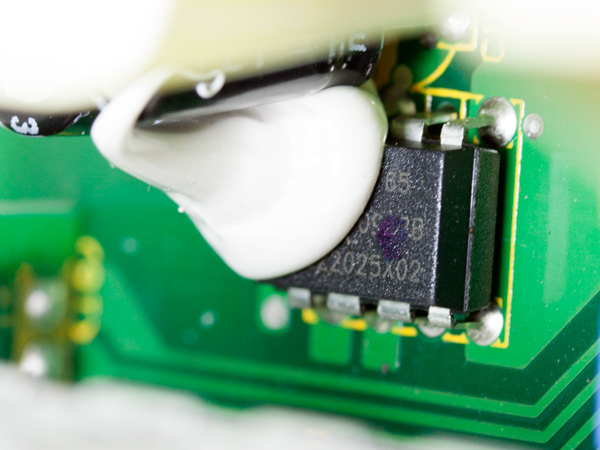
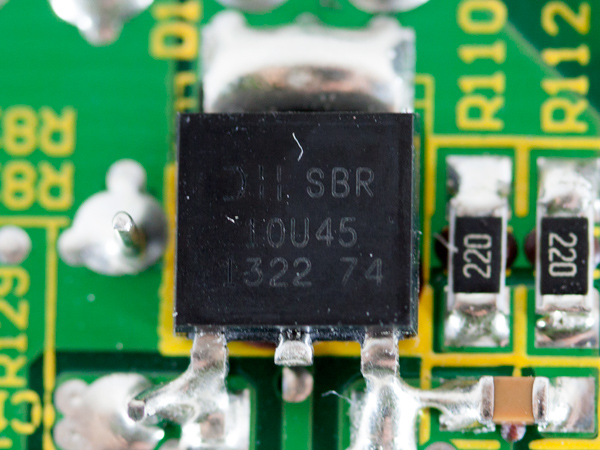
The standby PWM controller was partially covered by white glue, but we were able to identify it. It is an Infineon ICE2QR4765, and the 5VSB rectifier, a SBR10U45, is installed on the solder side of the main PCB.
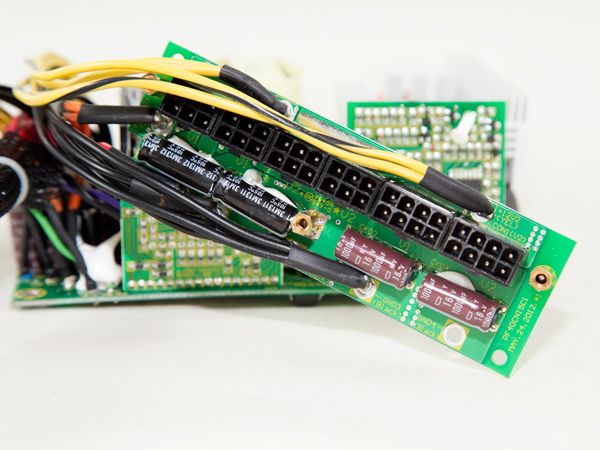
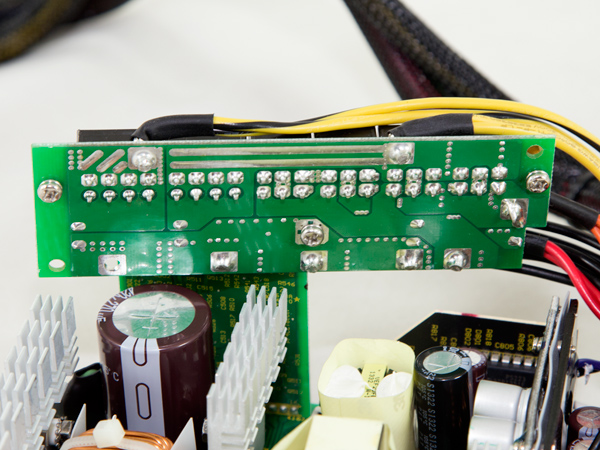
On the front side of the modular PCB, several Chemi-Con and Rubycon electrolytic caps provide some extra ripple filtering. It is always nice to see filtering components on this board.
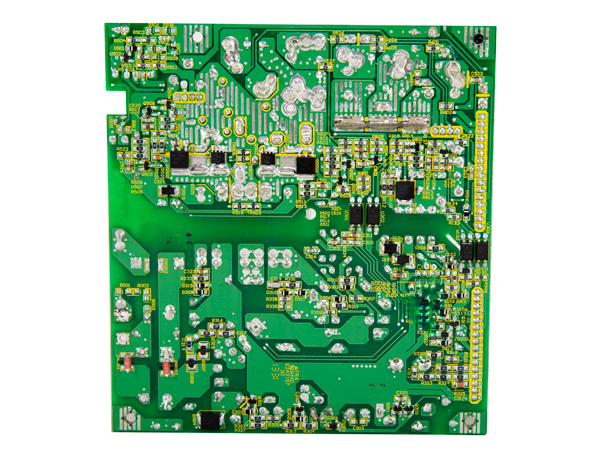
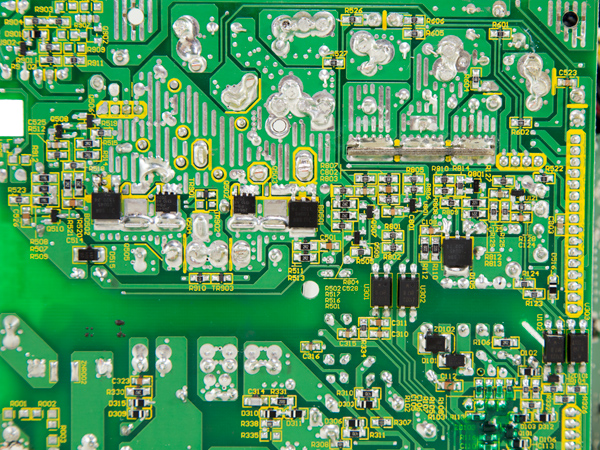
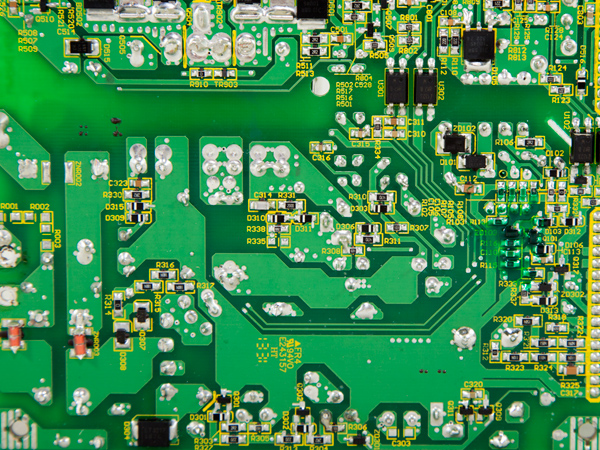
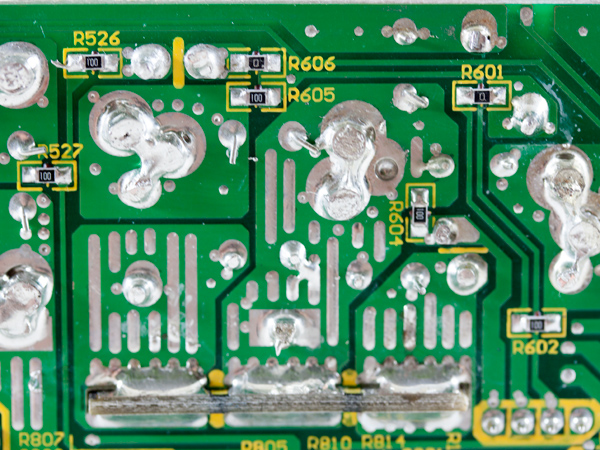
The soldering quality is quite good, as you can see from the photos above. On top of that, we didn't spot any long component leads, which can cause dangerous shorts.
The cooling fan is provided by Adda, a respected fan manufacturer, and its model number is AD1212MB-A70GL (120mm, 12V, 0.33A, 80.5 CFM, 38 dB[A], 2050 RPM). This fan uses double ball bearings, so it should last for quite a while. Because it is a high-speed fan, Seasonic should have used a relaxed rotational speed profile, especially at mid- and higher loads, instead of staying on the safe side. That's why, with increased loads and even with ambient temperatures below 30 °C (86 °F), the fan spins quickly, outputting a loud noise that won't please many users.
Current page: A Look Inside And Component Analysis
Prev Page Packaging, Contents, Exterior And Cabling Next Page Load Regulation, Hold-Up Time And Inrush Current
Aris Mpitziopoulos is a contributing editor at Tom's Hardware, covering PSUs.
-
InvalidError 0.4 ohm Rdson is not that bad for primary-side FETs where switching losses tend to be much worse than on-losses.Reply
Also, FETs with better on-resistance usually have larger gate charge, which means you end up needing more gate drive power to achieve the same switching performance. Saving 3W on full-load on-losses does not sound as good if it costs you 2W in gate drive regardless of load.
Using FETs with lower on-resistance does not necessarily improve overall efficiency by much. -
TechyInAZ Good read. I personally have the 550W version of that PSU and it works very well. Very quiet too, however my entire system doesn't go beyond 350W at max load.Reply
BTW...The 550W version is usually only $3-$5 more than the 450W. I've never seen the price change either, so it is a bit silly to buy the 450W version if the 550W is always only $5 more. -
Dunlop0078 I also have the 550watt version, its been going strong for about two years now its very quiet even under load I think I pull about 450watts or so when I have all my overclocks applied. It has been totally stable not a single problem with my PC or the psu since I bought it.Reply
However I think the price should be lowered a bit for the 550watt version because now it has to compete with the likes of the EVGA 550 G2 which is about the same price but it seems to perform a bit better and comes with a 10 year warranty. -
TechyInAZ Reply16760449 said:I also have the 550watt version, its been going strong for about two years now its very quiet even under load I think I pull about 450watts or so when I have all my overclocks applied. It has been totally stable not a single problem with my PC or the psu since I bought it.
However I think the price should be lowered a bit for the 550watt version because now it has to compete with the likes of the EVGA 550 G2 which is about the same price but it seems to perform a bit better and comes with a 10 year warranty.
10 year warranty!!?? I've been using EVGA graphics cards for years now, I think ill start buying EVGA PSUs now. :D -
Dunlop0078 Reply16760449 said:I also have the 550watt version, its been going strong for about two years now its very quiet even under load I think I pull about 450watts or so when I have all my overclocks applied. It has been totally stable not a single problem with my PC or the psu since I bought it.
However I think the price should be lowered a bit for the 550watt version because now it has to compete with the likes of the EVGA 550 G2 which is about the same price but it seems to perform a bit better and comes with a 10 year warranty.
10 year warranty!!?? I've been using EVGA graphics cards for years now, I think ill start buying EVGA PSUs now. :D
Actually im wrong on that its a 7 year warranty for the 550watt model (still very good in my opinion) the 750watt g2 and above have the 10 year. -
10tacle I know Seasonic is good and an OEM to PSUs for Corsair and whatnot, but I was an unlucky one. My 620W S12II crapped out on an older backup rig after about a year of light use, maybe 250 hours. Unfortunately I voided the 5-year warranty when I had to break the screw seal and open it to get a screw out that accidentally fell in (PC was unplugged when that happened). I figured I'd never need to worry about dealing with a warranty RMA anyway since in nearly 20 years of PC building I've never had one die early on me. WRONG.Reply -
InvalidError Reply
Murphy strikes again!16760681 said:I figured I'd never need to worry about dealing with a warranty RMA anyway since in nearly 20 years of PC building I've never had one die early on me. WRONG.
-
Blueberries This PSU isn't bad but I don't see why anyone would want to pay in the $70's for it when there are gold-- almost platinum rated Leadex PSUs for $80-$90.Reply
The build quality is what I've come to expect from SeaSonic. Very well built with mostly Nippon Chemi-Con capacitors. Rubycon is also a good brand, and I like to see Infineon MOSFETs in PSUs. This PSU should last forever but isn't very efficient compared to similarly-priced competition. -
turkey3_scratch Reply16760497 said:16760449 said:I also have the 550watt version, its been going strong for about two years now its very quiet even under load I think I pull about 450watts or so when I have all my overclocks applied. It has been totally stable not a single problem with my PC or the psu since I bought it.
However I think the price should be lowered a bit for the 550watt version because now it has to compete with the likes of the EVGA 550 G2 which is about the same price but it seems to perform a bit better and comes with a 10 year warranty.
10 year warranty!!?? I've been using EVGA graphics cards for years now, I think ill start buying EVGA PSUs now. :D
Yeah, aside from the fantastic quality, that was another reason I purchased the G2 over any other PSU. -
tsnor "... Seasonic doesn't use a fully modular design in its G series to keep production costs low. Of course, it would be nice if the company changed its strategy and went all-modular on its G-series models since many competing PSUs are, in fact, fully modular...."Reply
Or maybe they
(1) know that people will always use the permanent cables that power the MB
(2) know that two less connectors is a good thing for product reliability
(3) want to ship a product for people like me that prefer this configuration to a fully modular configuration
